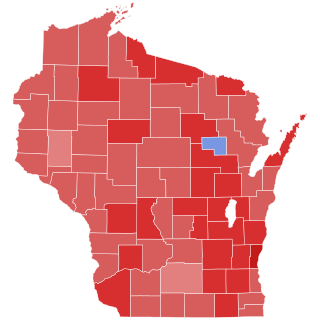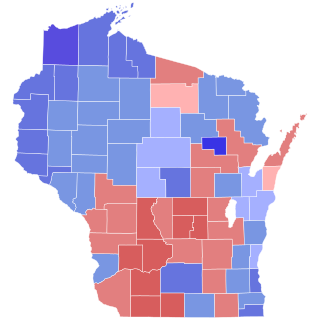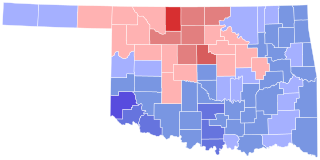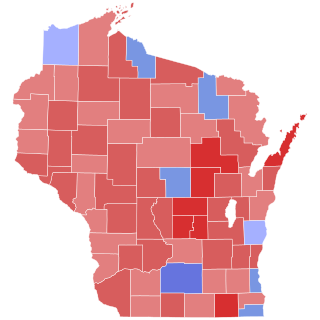
The 1998 Wisconsin gubernatorial election was held on November 3, 1998. Incumbent Governor Tommy Thompson won re-election for the third time with nearly 60% of the vote. As of 2022, this is most recent gubernatorial election in which Milwaukee, Rock, Portage, and Iowa counties voted for the Republican candidate, and the most recent where the winner garnered a double digit margin of victory. Gary George unsuccessfully sought the Democratic nomination.

The 1994 Wisconsin gubernatorial election was held on November 8, 1994. In the midst of the Republican Revolution, incumbent Republican governor Tommy Thompson won the election with a landslide 67% of the vote, winning a third term as Governor of Wisconsin.

The 1982 Wisconsin gubernatorial election was held on November 2, 1982. Democrat Anthony S. Earl won the election with 56.75% of the vote, defeating Republican Terry J. Kohler.

The 1974 Wisconsin gubernatorial election was held on November 5, 1974. Democrat Patrick Lucey won the election with 53% of the vote, winning his second term as Governor of Wisconsin and defeating Republican William Dyke.

The 1970 Wisconsin gubernatorial election was held on November 3, 1970. Democrat Patrick J. Lucey won the election with 54.23% of the vote, winning his first term as Governor of Wisconsin and defeating incumbent lieutenant governor, Republican Jack B. Olson. Roman R. Blenski unsuccessfully sought the Republican nomination. As of 2024, this is the last time the Democratic gubernatorial candidate carried Oconto County.

The 1968 Wisconsin gubernatorial election was held on November 5, 1968. Republican Warren P. Knowles won the election with 53% of the vote, winning his third term as Governor of Wisconsin and defeating Democrat Bronson C. La Follette. This was the last gubernatorial election in Wisconsin where the governor was elected to a two year term separately from the Lieutenant Governor.

The 1966 Wisconsin gubernatorial election was held on November 8, 1966. Republican Warren P. Knowles won the election with 53.50% of the vote, winning his second term as Governor of Wisconsin and defeating Democratic incumbent lieutenant governor and future governor Patrick J. Lucey.

The 1964 Wisconsin gubernatorial election was held on November 3, 1964. Republican Warren P. Knowles won the election with 50.55% of the vote, winning his first term as Governor of Wisconsin and narrowly defeating incumbent Democrat John W. Reynolds.

The 1962 Wisconsin gubernatorial election was held on November 6, 1962. Democrat John W. Reynolds won the election with 50.36% of the vote, narrowly defeating Republican Philip Kuehn in the state's closest gubernatorial election since 1940. As of 2024, this is the only time Menominee County has voted for the Republican candidate in a gubernatorial election.

The 1960 Wisconsin gubernatorial election was held on November 8, 1960. Democrat Gaylord A. Nelson won the election with 51.5% of the vote, retaining his position as Governor of Wisconsin.

The 1910 Oklahoma gubernatorial election was held on November 8, 1910, and was a race for Governor of Oklahoma. Democrat Lee Cruce defeated Republican J. W. McNeal. Also on the ballot were J. T. Cumbie of the Socialist Party and George E. Rouch of the Prohibition Party.

The 1907 Oklahoma gubernatorial election was held on September 17, 1907, and was the inaugural race for Governor of Oklahoma. Democrat Charles N. Haskell defeated Republican Frank Frantz, the territorial governor. Also on the ballot was C. C. Ross of the Socialist Party.

The 1956 Wisconsin gubernatorial election was held on November 6, 1956. Republican nominee Vernon W. Thomson defeated Democratic nominee William Proxmire with 51.89% of the vote. Proxmire was defeated for the third consecutive gubernatorial election; he would subsequently win a special election for the United States Senate the following year after the death of Joseph McCarthy.

The 1958 Wisconsin gubernatorial election was held on November 4, 1958. The Democratic nominee, state senator Gaylord A. Nelson, defeated the Republican incumbent governor, Vernon W. Thomson, receiving 53.59% of the vote.

The 1952 Wisconsin gubernatorial election was held on November 4, 1952.

The 1950 Wisconsin gubernatorial election was held on November 7, 1950.

The 1948 Wisconsin gubernatorial election was held on November 2, 1948.

The 1946 Wisconsin gubernatorial election was held on November 5, 1946.

The 1942 Wisconsin gubernatorial election was held on November 3, 1942.

The 1940 Wisconsin gubernatorial election was held on November 5, 1940. Primary elections were held on September 17, 1940.
























